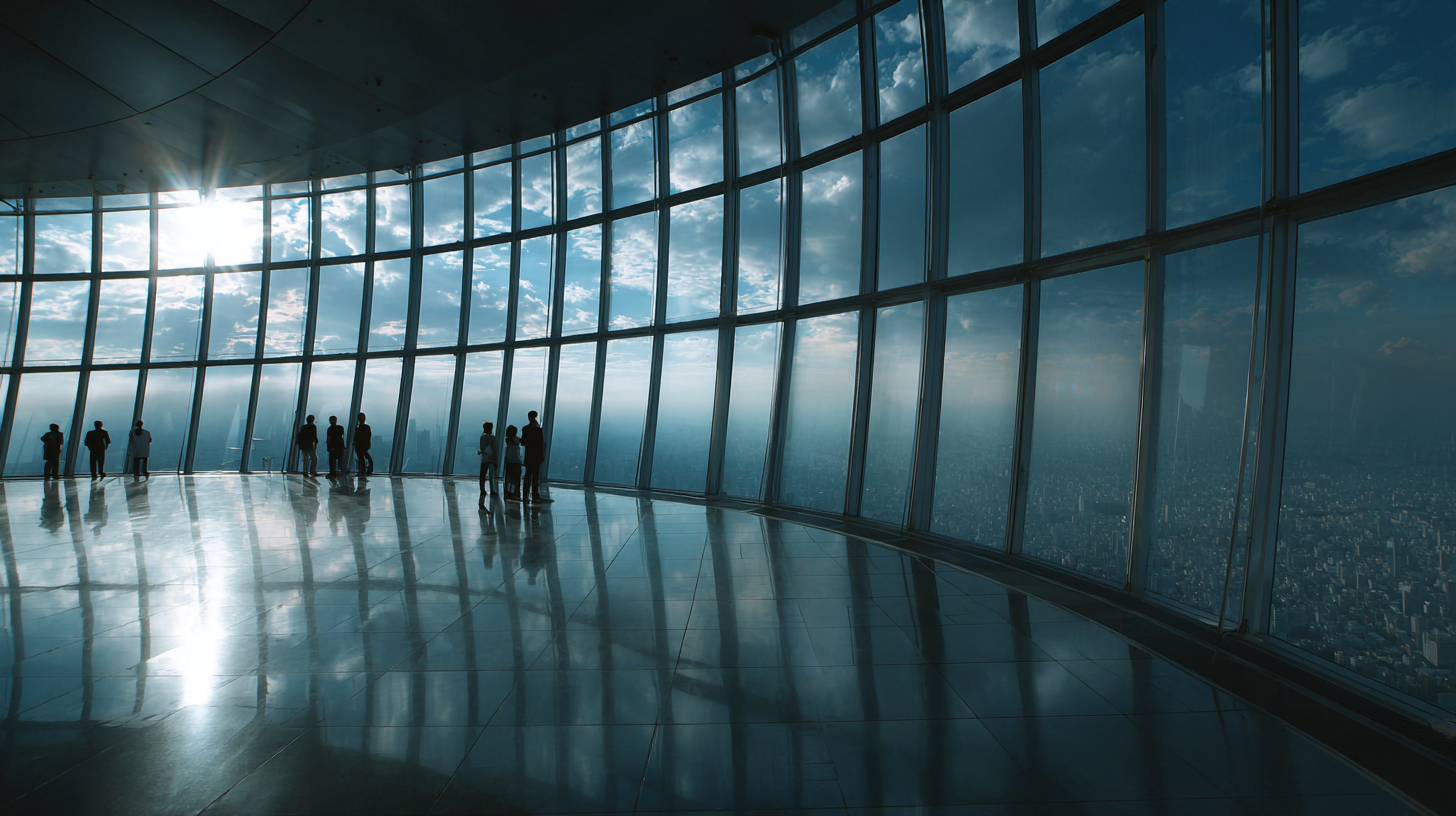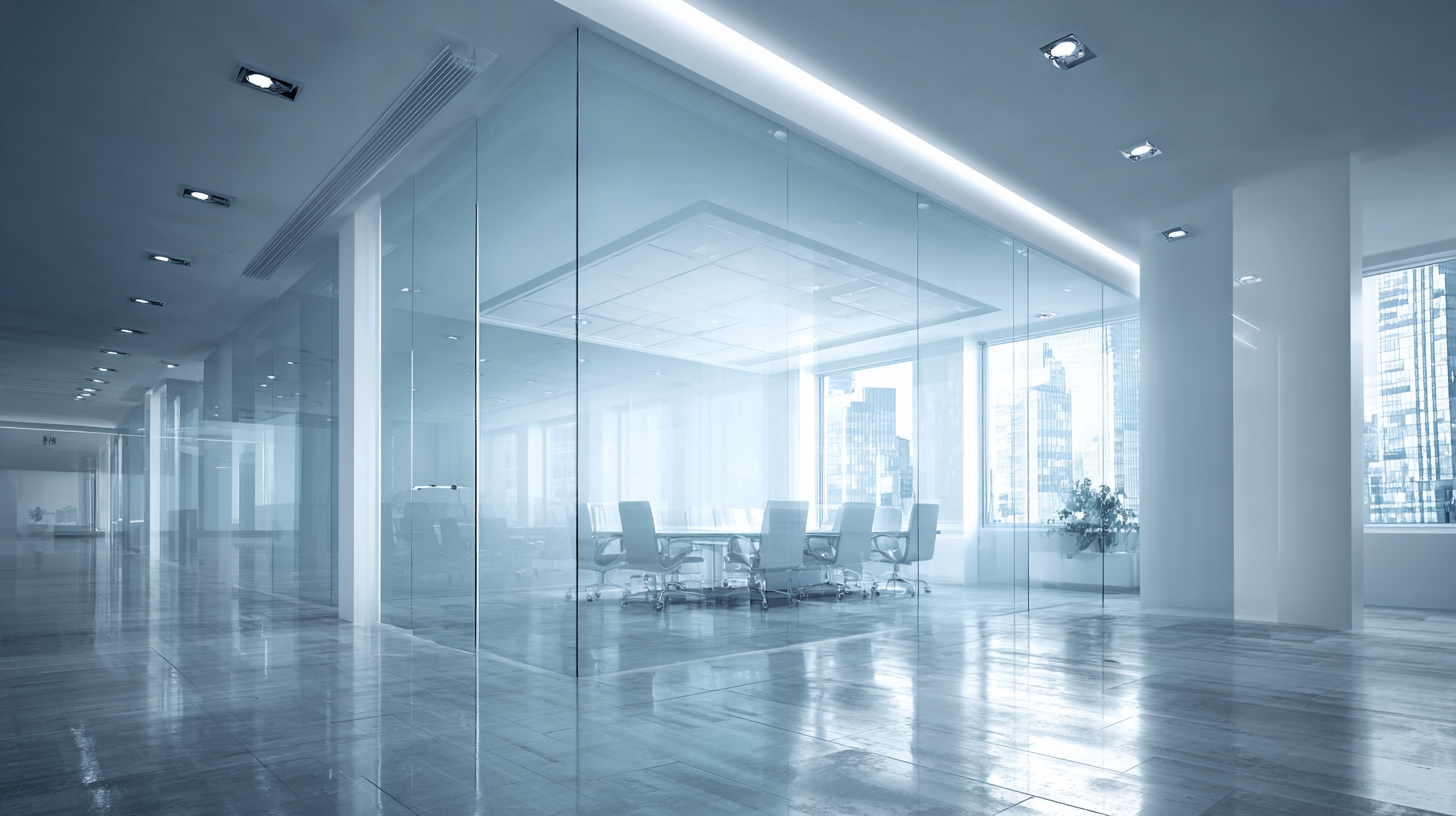
In today's fast-paced technological landscape, the demand for high-performance materials continues to rise, with Anti-Reflective Glass leading the charge in various industries. According to a report by Grand View Research, the global anti-reflective coatings market is expected to reach USD 5.2 billion by 2025, driven by the growing adoption of advanced optical technologies in sectors such as electronics, automotive, and healthcare. Anti-Reflective Glass not only enhances visual clarity and reduces glare but also improves the efficiency of solar panels and optical devices, making it a pivotal element in innovations across these fields. This blog explores five innovative applications of best Anti-Reflective Glass, showcasing its transformative impact on modern industries and the reasons behind its increasing popularity.

The innovative application of anti-reflective glass in high-performance consumer electronics is revolutionizing device usability and aesthetics. As showcased by recent advancements, major players are integrating cutting-edge anti-reflective coatings to enhance screen visibility and durability. The global market for anti-reflective coatings is projected to grow significantly, with an expected increase of USD 3.51 billion from 2024 to 2028, driven largely by demand from the solar industry and advancements in AI technology transforming market dynamics.
Moreover, the development of advanced materials like "super sapphire" by researchers is paving the way for enhanced screens that resist glare, dust, and fog. These breakthroughs not only improve user experience but also bolster the longevity of devices. The ongoing evolution in materials science is reflected in the growing transparency and functionality of consumer electronics. As the industry moves forward, the integration of such innovative materials will likely redefine performance standards, placing a premium on user-friendly features.
This bar chart illustrates the applications of anti-reflective glass across various high-performance consumer electronics, showcasing its significance in enhancing visual quality and user experience.
The application of anti-reflective glass in automotive displays has significantly enhanced safety for drivers and passengers alike.
Traditional displays can often be hampered by glare from sunlight or artificial lighting, causing visibility issues that may distract the driver or obscure important information.
By incorporating anti-reflective glass into vehicle displays, manufacturers are effectively minimizing light reflection, thereby providing clearer and more legible information under various lighting conditions.
Furthermore, this technology allows for improved screen clarity, which is essential for modern vehicles that rely heavily on digital interfaces for navigation, entertainment, and vital vehicle alerts.
Enhanced visibility not only contributes to a safer driving experience but also aligns with user preferences for high-quality visual displays.
As anti-reflective glass becomes more prevalent in automotive design, drivers can expect a more intuitive interaction with their vehicle's features, paving the way for a future where safety and technology go hand in hand in the automotive industry.

Anti-reflective (AR) glass has become a pivotal component in the realm of medical equipment, enhancing visualization and diagnostic accuracy. A report by Markets and Markets projects that the global market for medical displays, which heavily relies on high-quality imaging technologies, is expected to reach $5.4 billion by 2025. The integration of AR glass allows medical professionals to view images with improved clarity and contrast, reducing glare and reflections that can obscure critical details during examinations.
Different medical devices, such as endoscopes, surgical cameras, and diagnostic imaging equipment, greatly benefit from the application of AR glass. According to a study published in the Journal of Medical Imaging, the use of anti-reflective coatings can increase light transmission by up to 99%, allowing for clearer images and more reliable diagnoses. This enhancement is crucial in procedures where precision is imperative, such as in minimally invasive surgeries, where a clear visual field can substantially impact patient outcomes. The ongoing advancements in AR technology continue to provide the medical industry with innovative solutions, ultimately improving patient care and operational efficiency.
The integration of anti-reflective glass in solar panels has significantly transformed energy production by enhancing efficiency. Traditional glass surfaces can reflect up to 20% of incoming sunlight, reducing the amount of solar energy converted into electricity. By employing advanced anti-reflective coatings, manufacturers can minimize these losses, allowing more light to penetrate the solar cells. This improvement translates directly into increased electrical output, making solar power more viable and cost-effective.
Moreover, the use of anti-reflective glass not only boosts efficiency but also contributes to the durability and longevity of solar panels. Enhanced resistance to environmental factors, such as dust and moisture, ensures that panels maintain optimal performance over time. As more industries prioritize sustainable energy solutions, adopting this innovative glass technology is pivotal for maximizing energy production while decreasing reliance on fossil fuels. The shift towards anti-reflective glass showcases a significant leap in solar technology, marking a critical step towards a greener future.
The integration of anti-reflective glass in architectural design has revolutionized how we perceive buildings and spaces. This innovative material not only enhances aesthetic appeal by minimizing glare and reflections but also creates a more harmonious interaction between the structure and its surroundings. Architects are increasingly utilizing anti-reflective glass to create sleek, modern facades that beautifully reflect natural light without the distracting distortions typically associated with traditional glass. This feature promotes a softer, more inviting atmosphere while preserving the integrity of the building's design.
Moreover, the functionality of anti-reflective glass extends beyond aesthetics. Its ability to improve visibility and reduce glare makes it an ideal choice for commercial and residential spaces alike. In offices, it fosters a more productive environment by allowing more natural light to permeate without harsh reflections interfering with screens and work surfaces. In residential settings, it enhances the comfort of living spaces, offering unobstructed views while maintaining privacy. As architects continue to embrace this cutting-edge material, the combination of beauty and practicality in architectural design is set to inspire future innovations, pushing the boundaries of what modern buildings can achieve.
